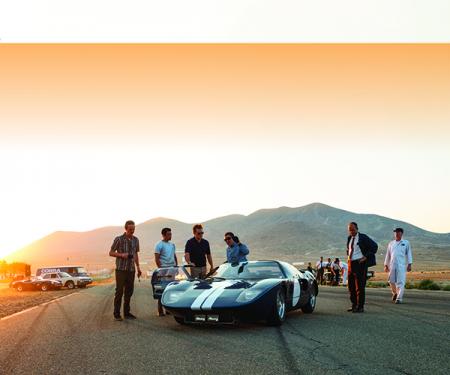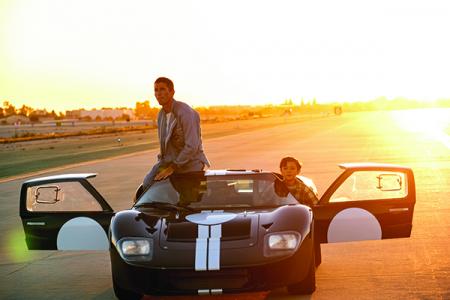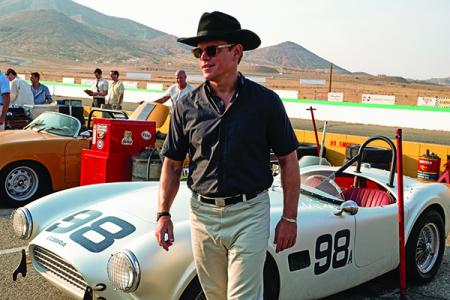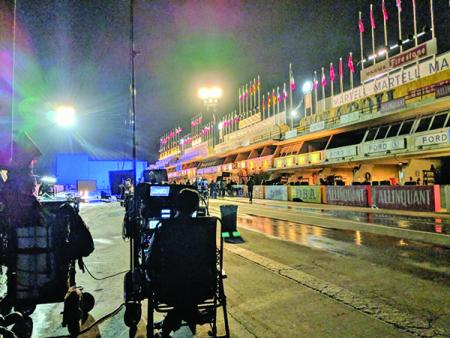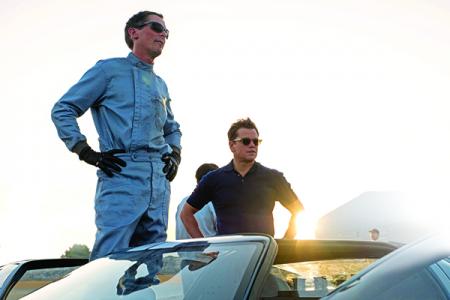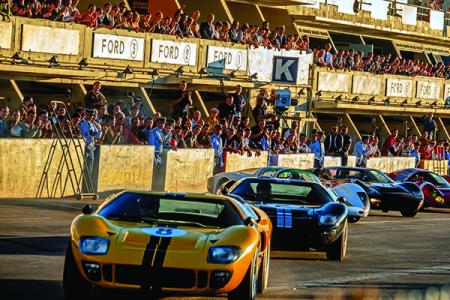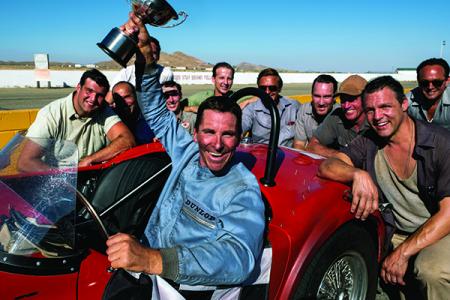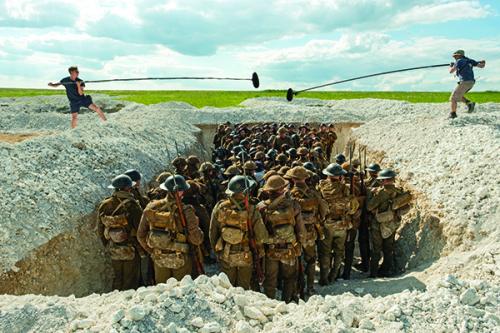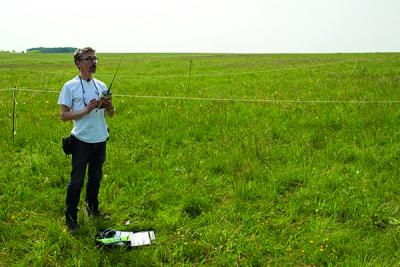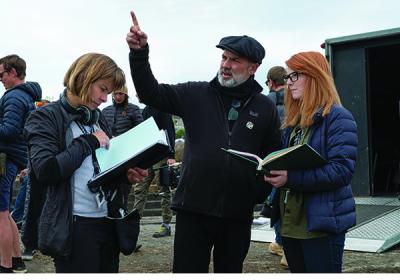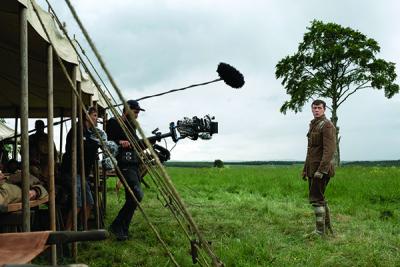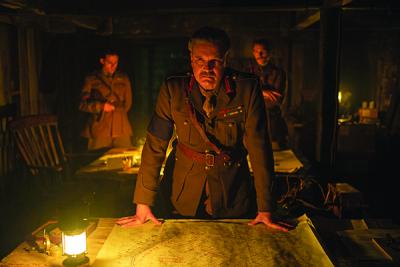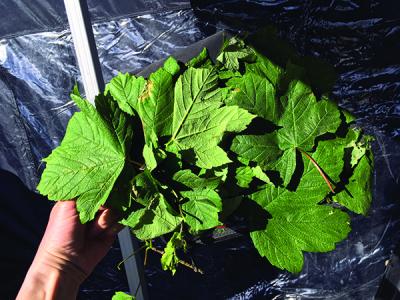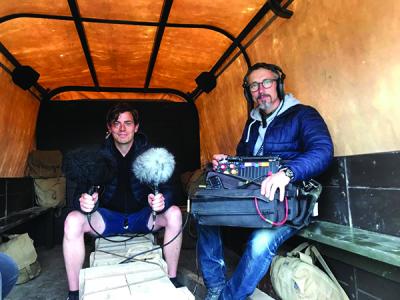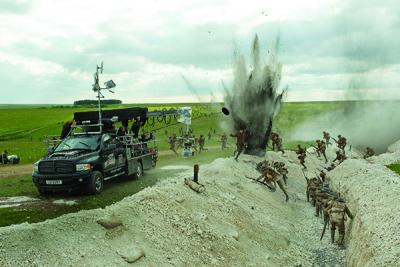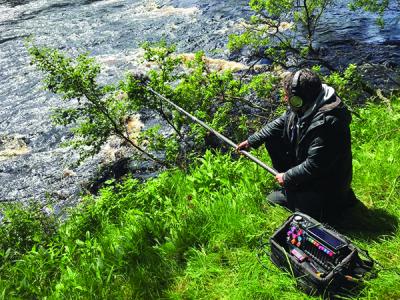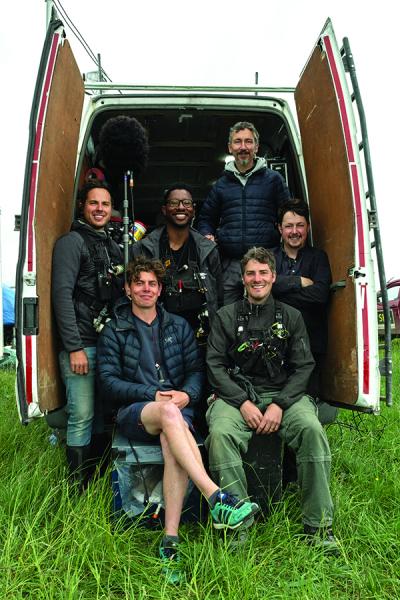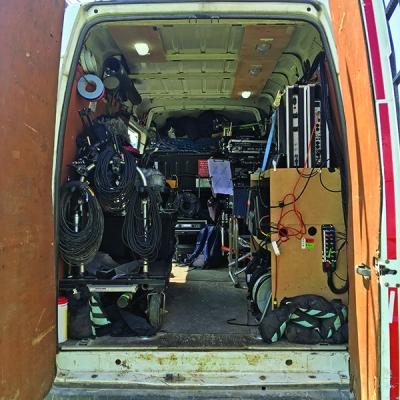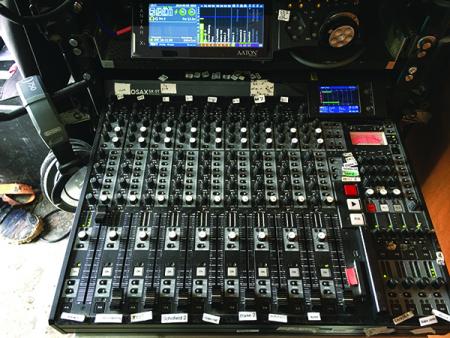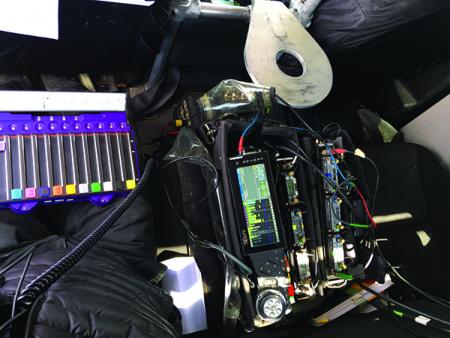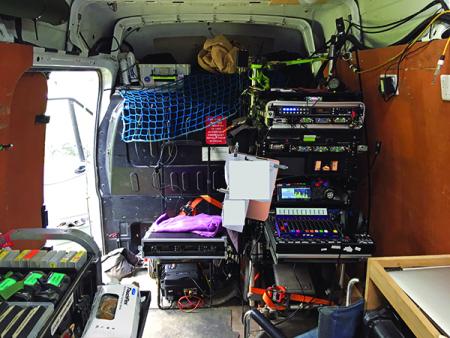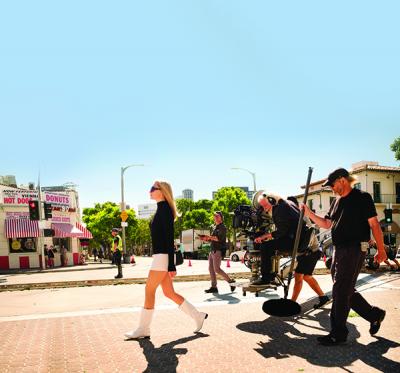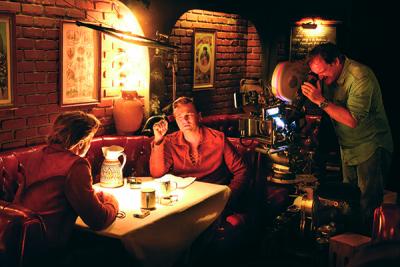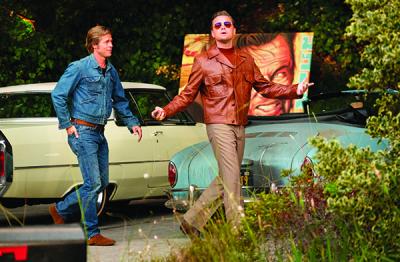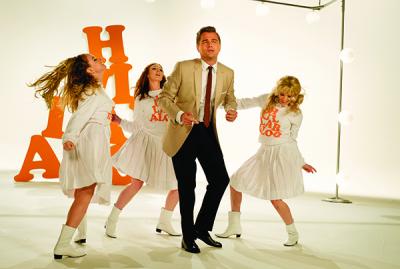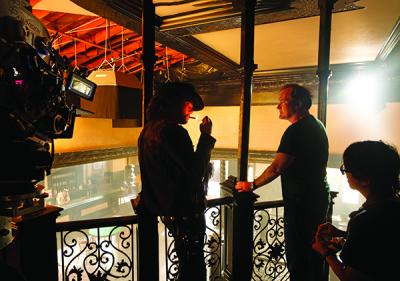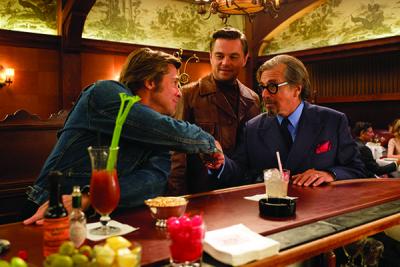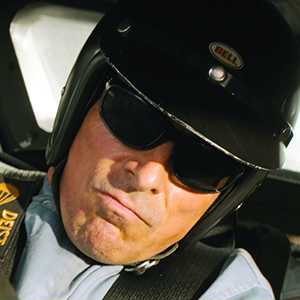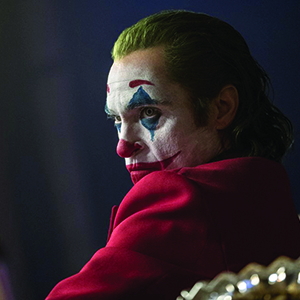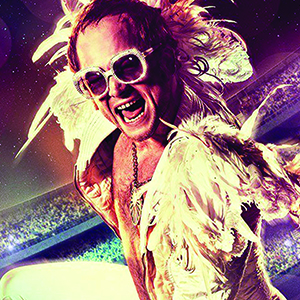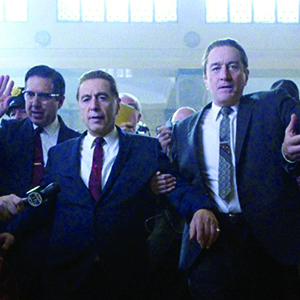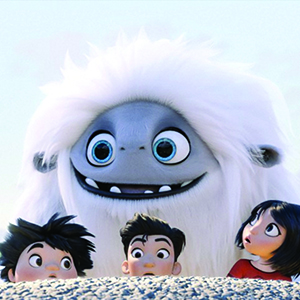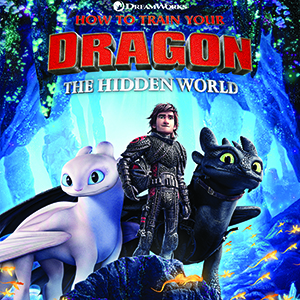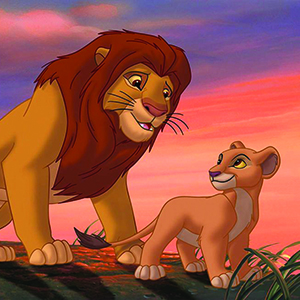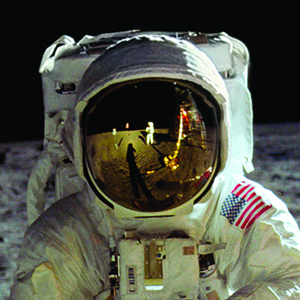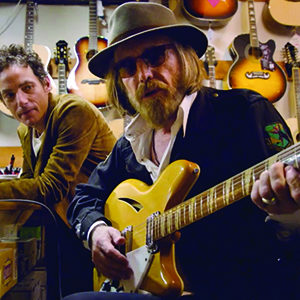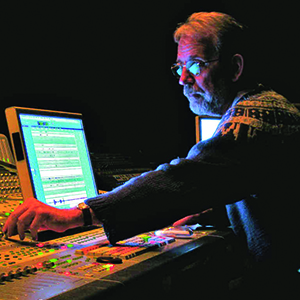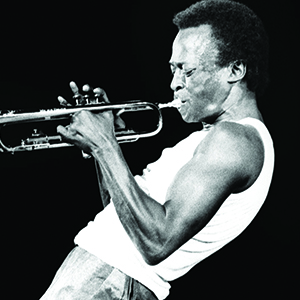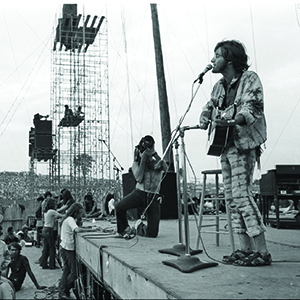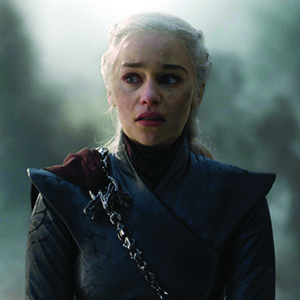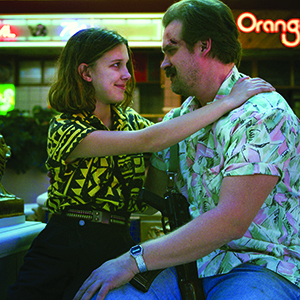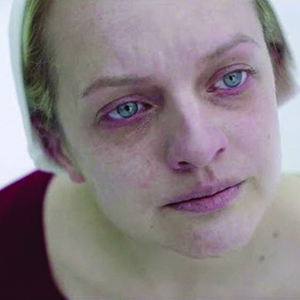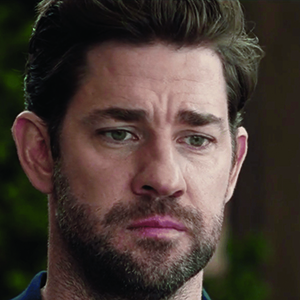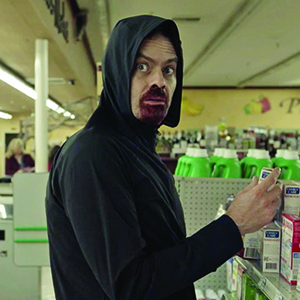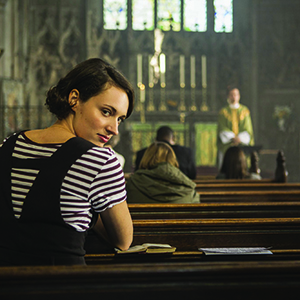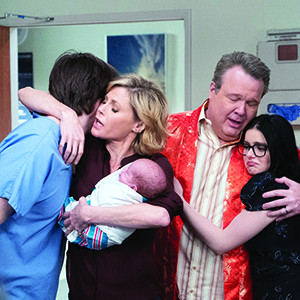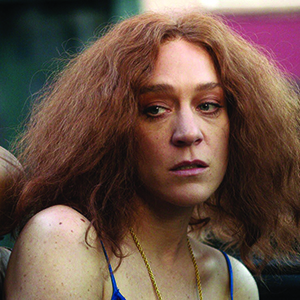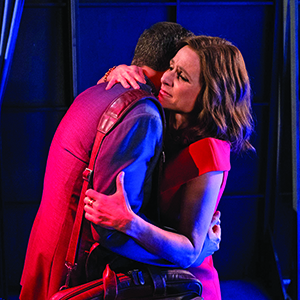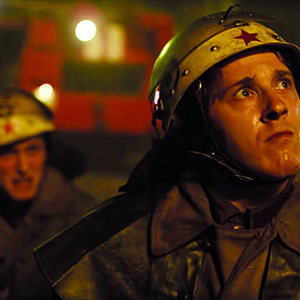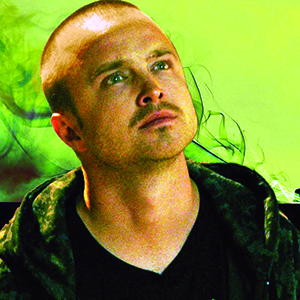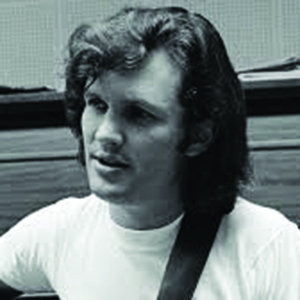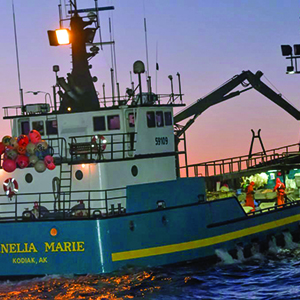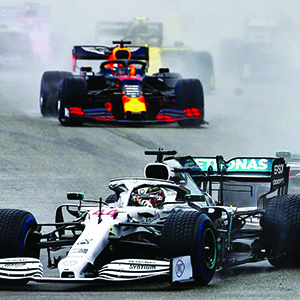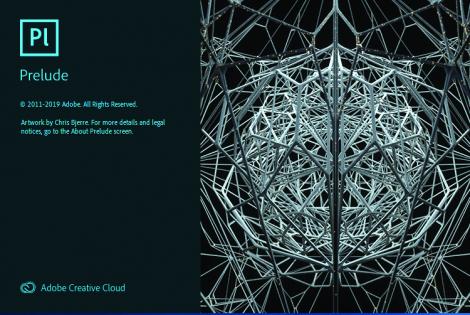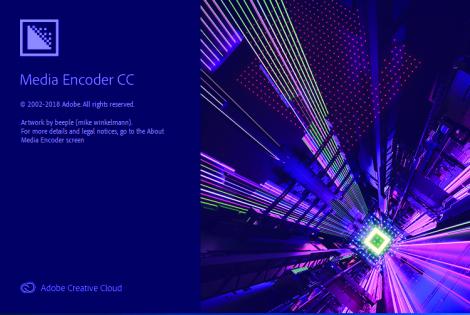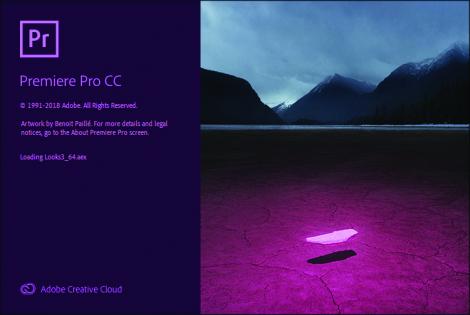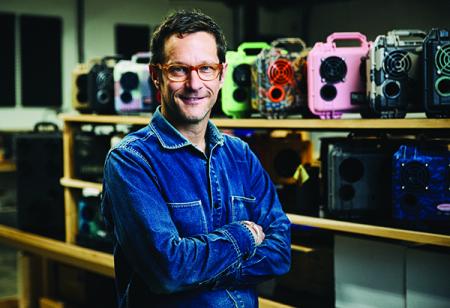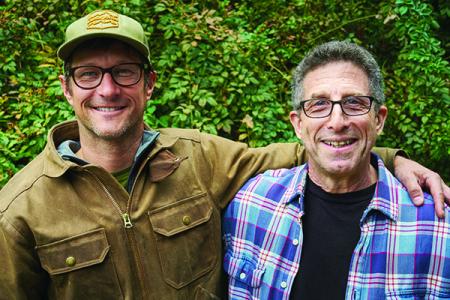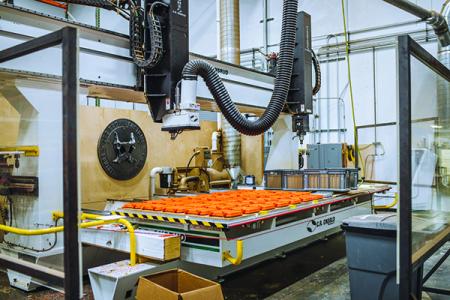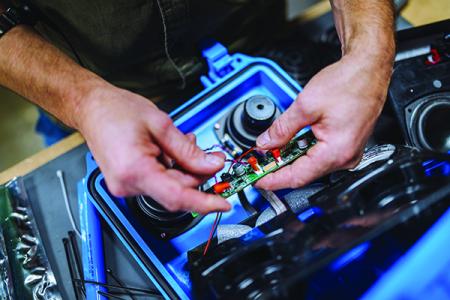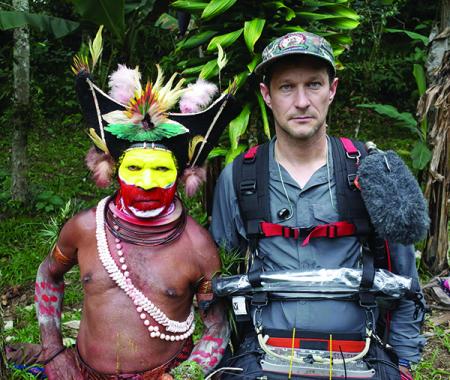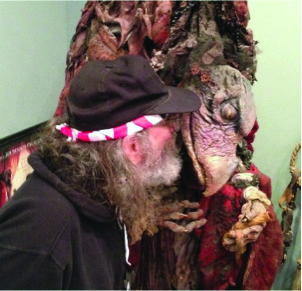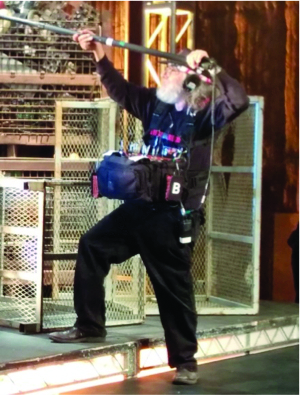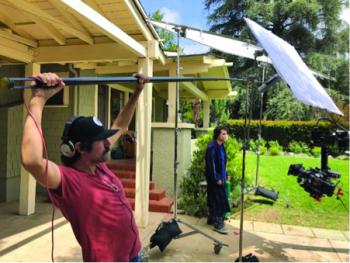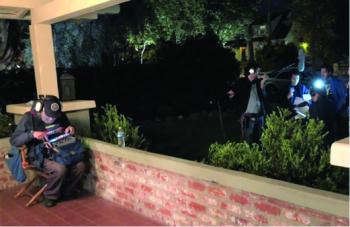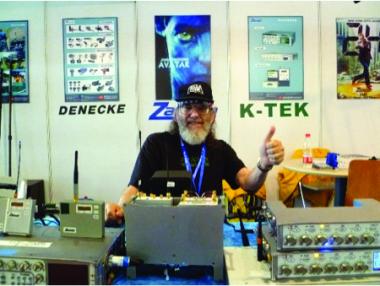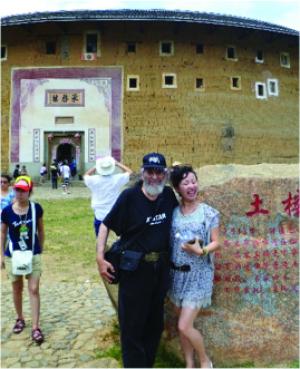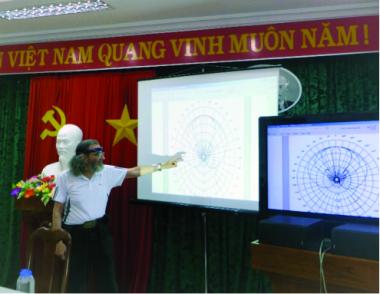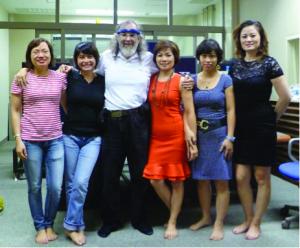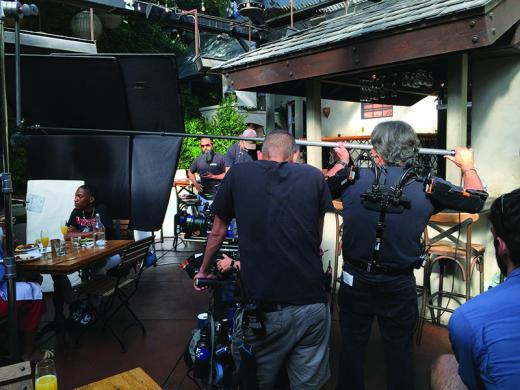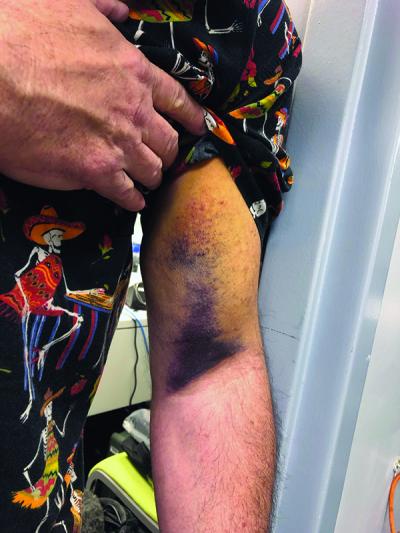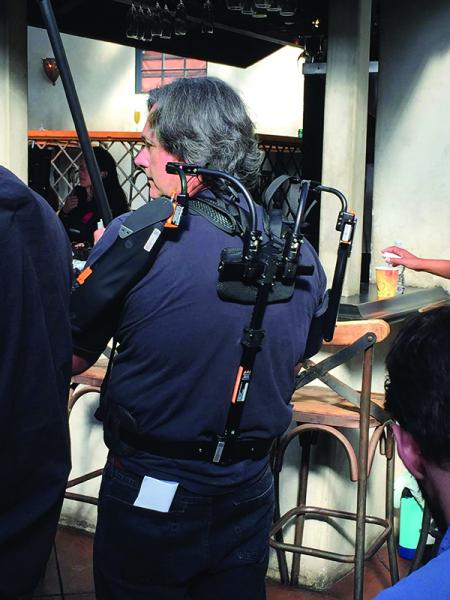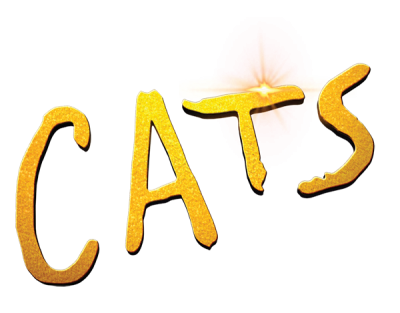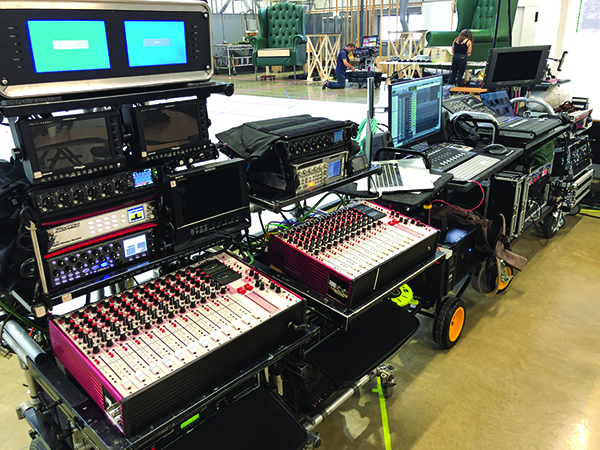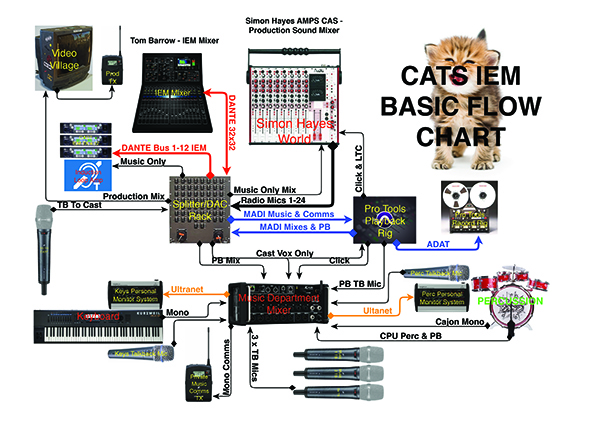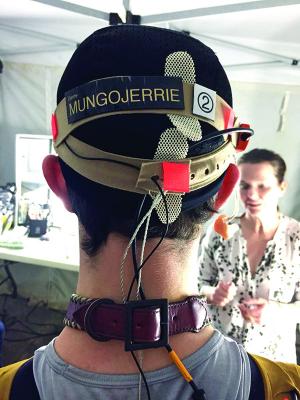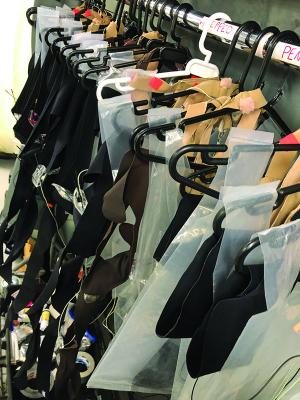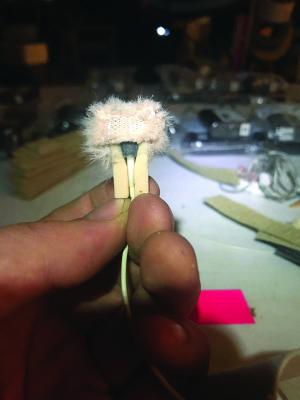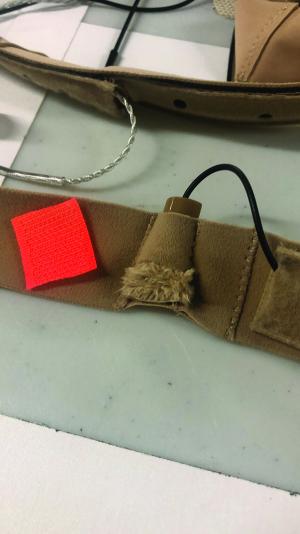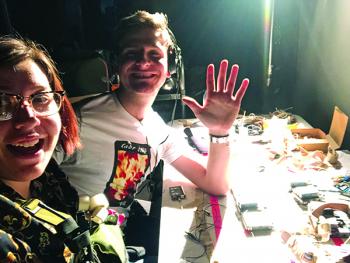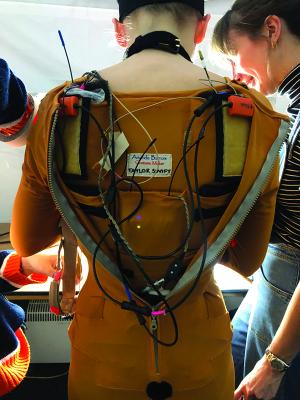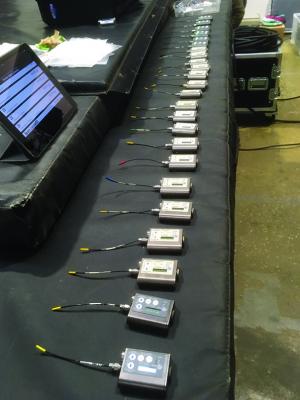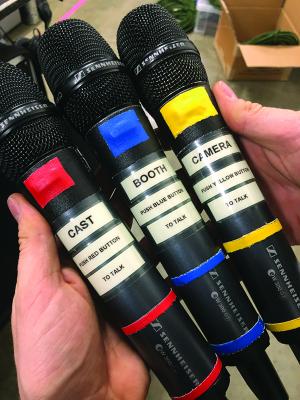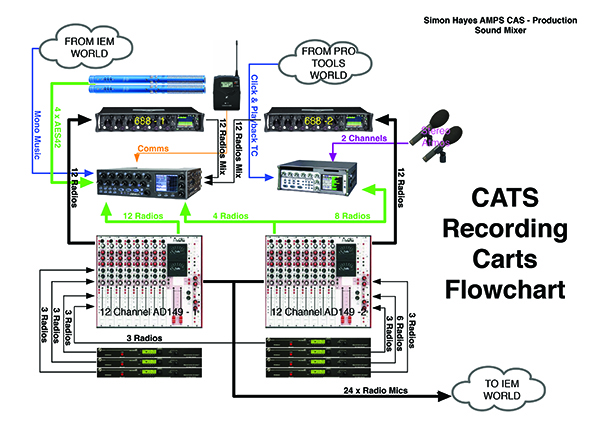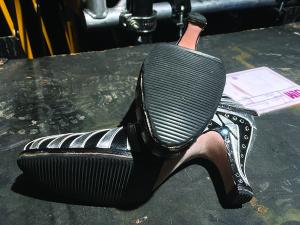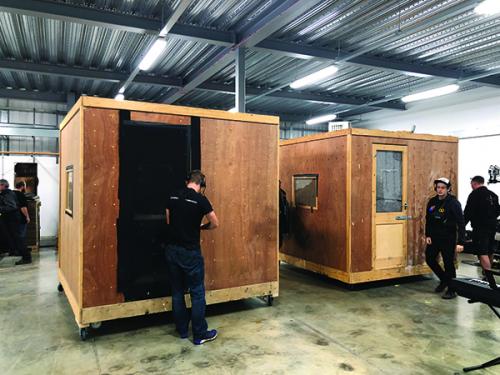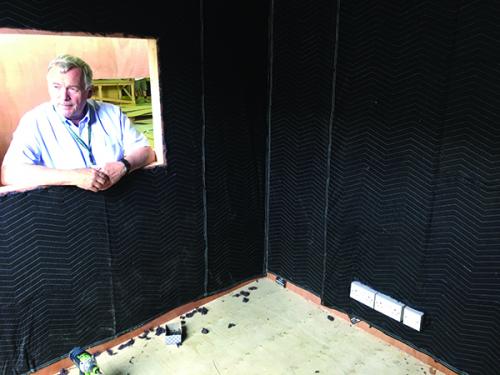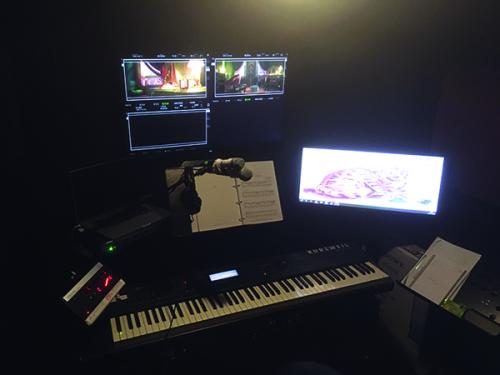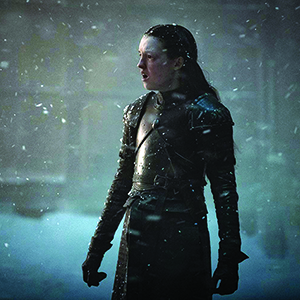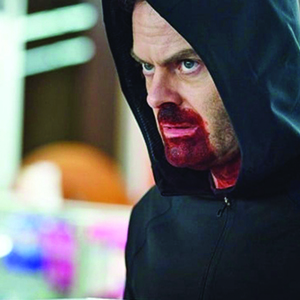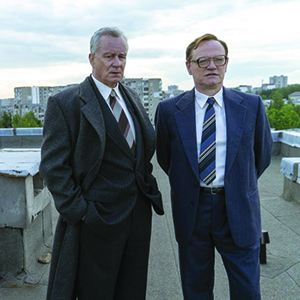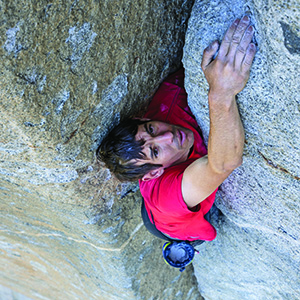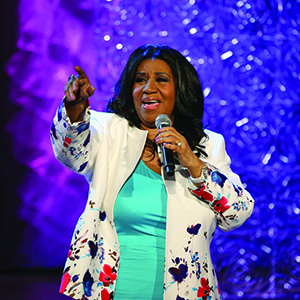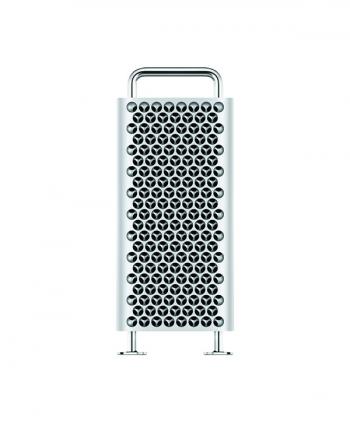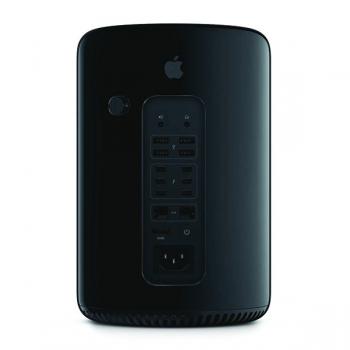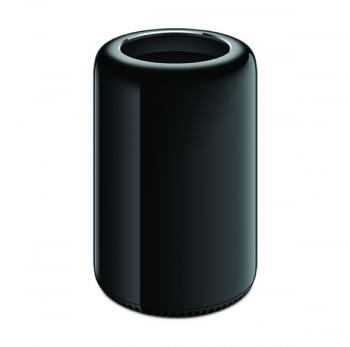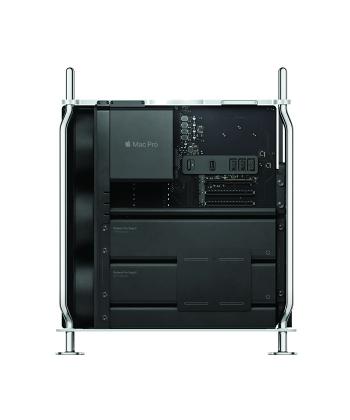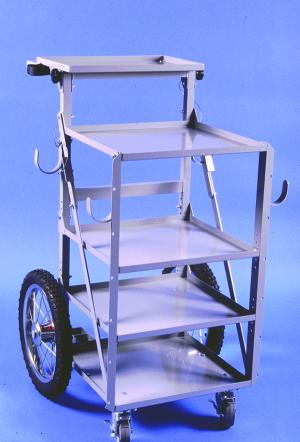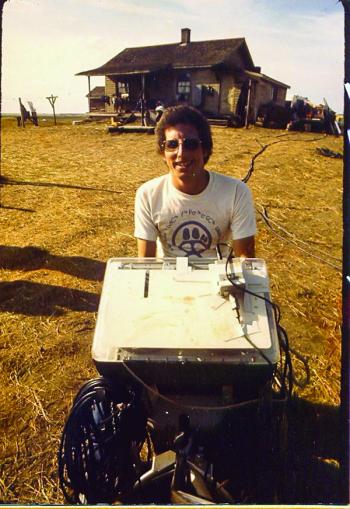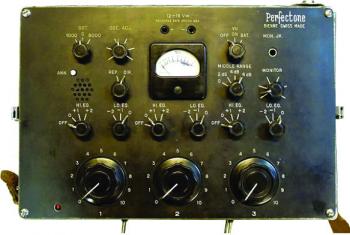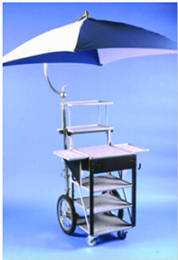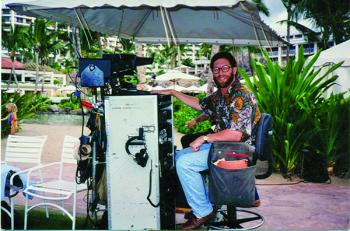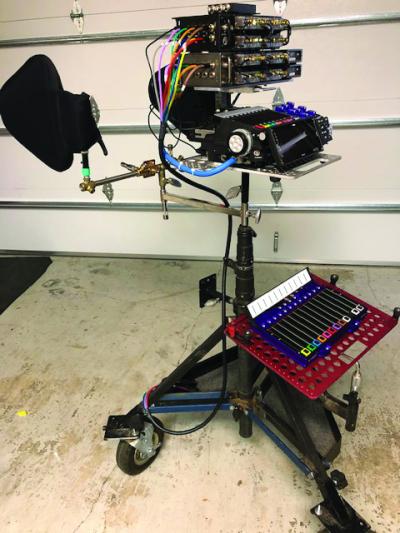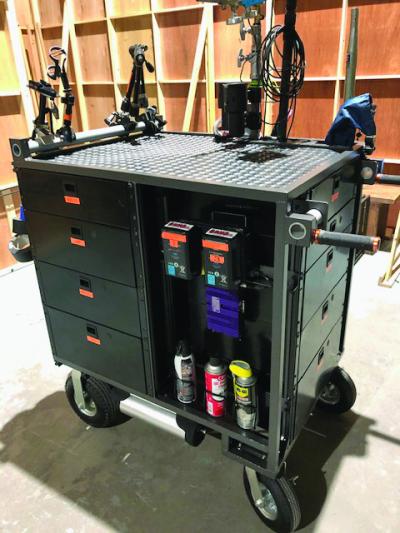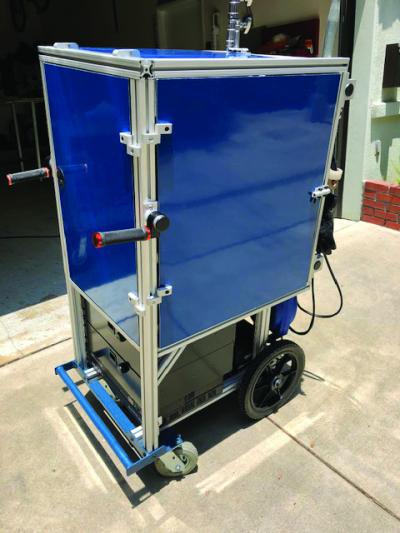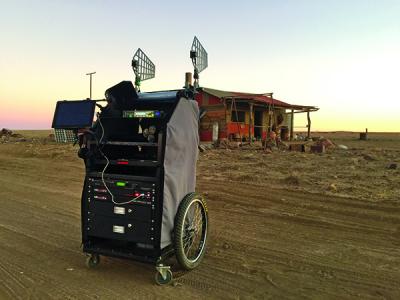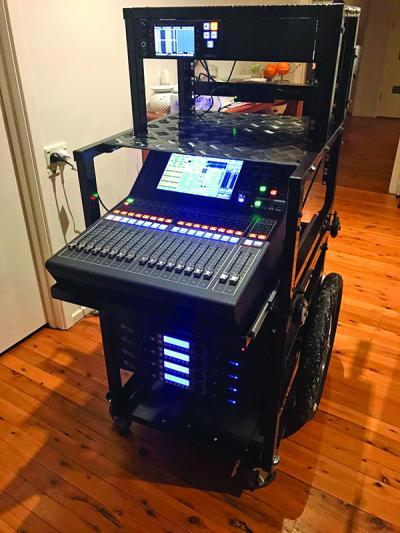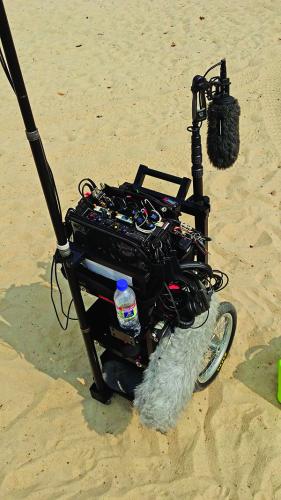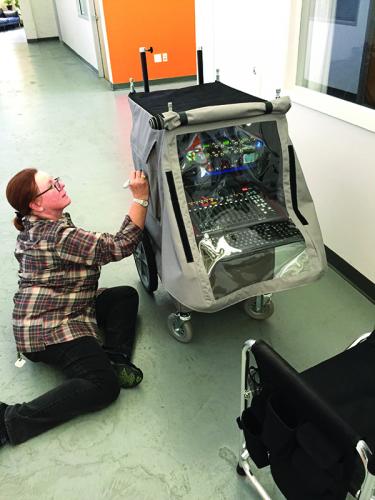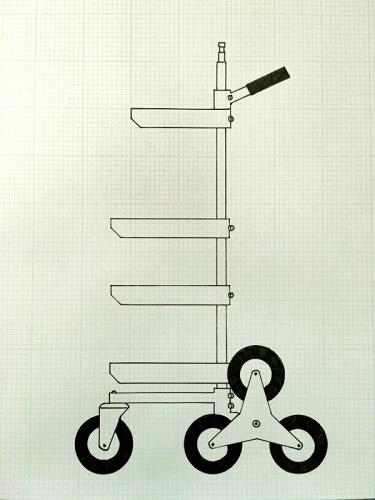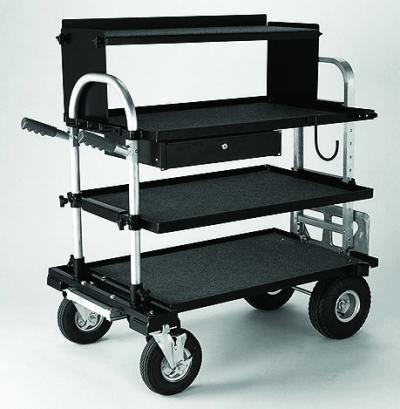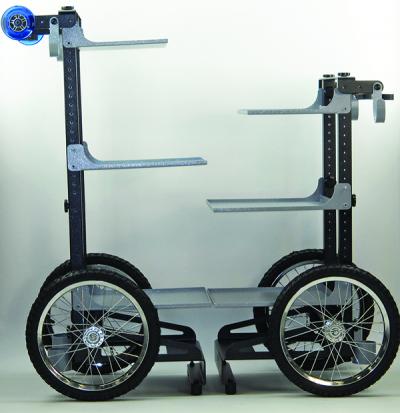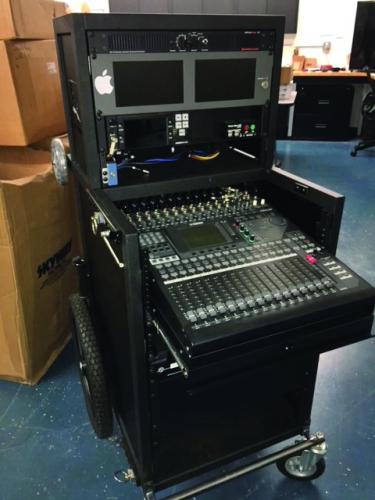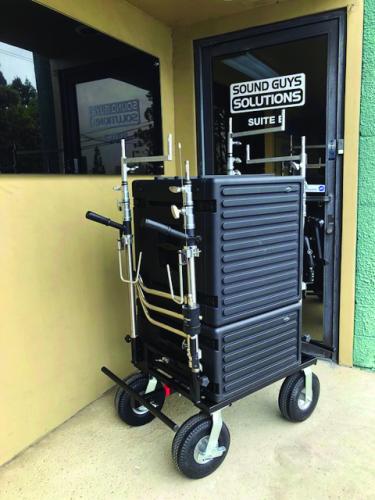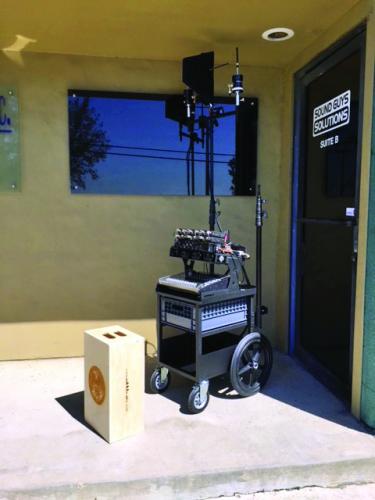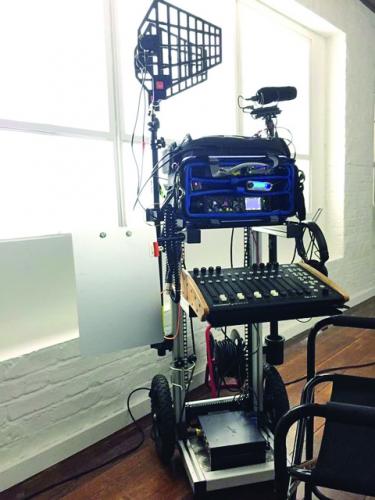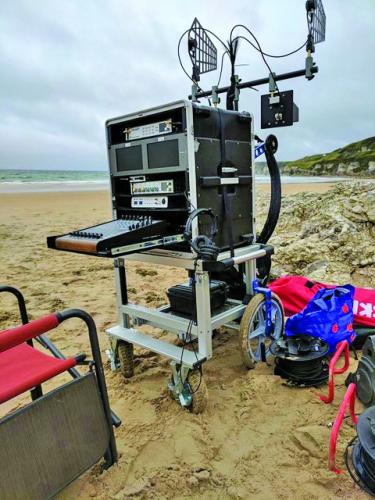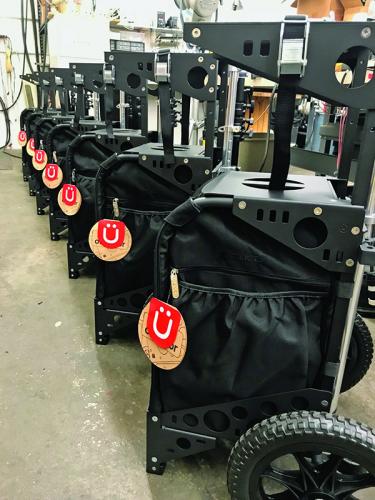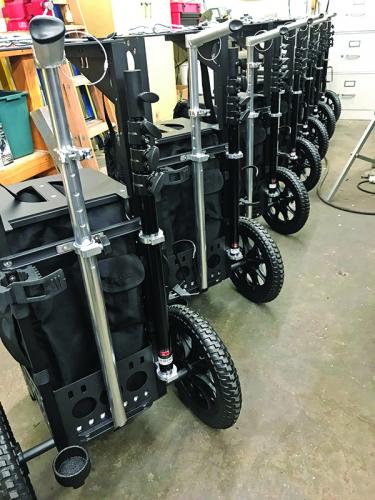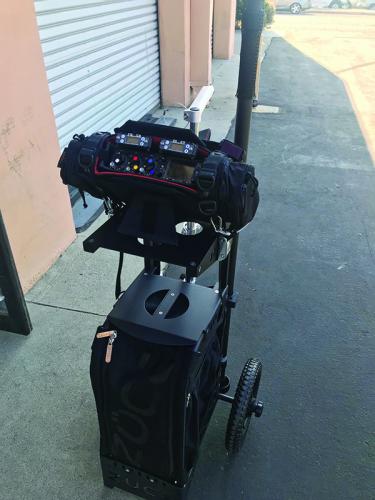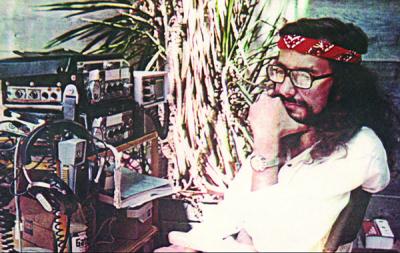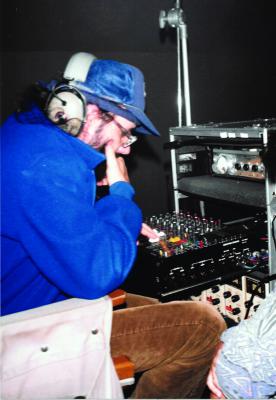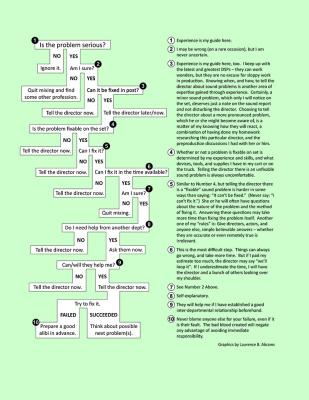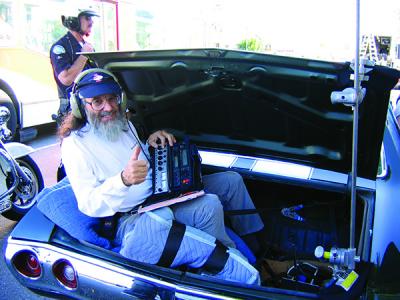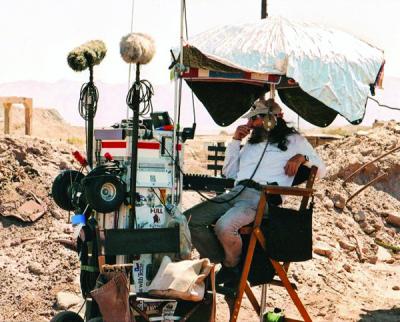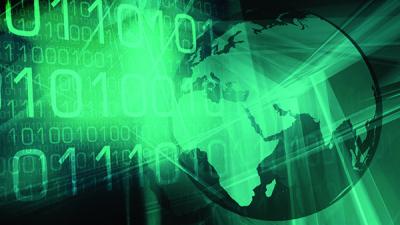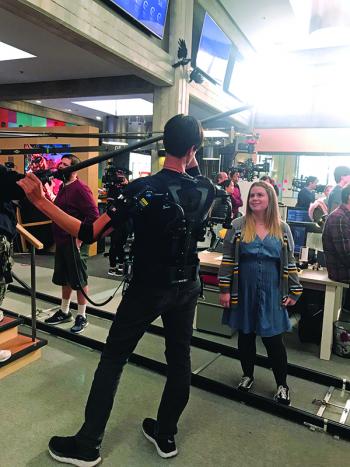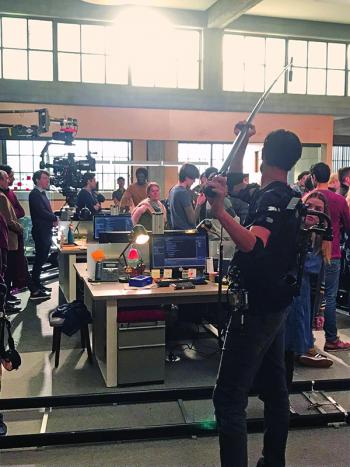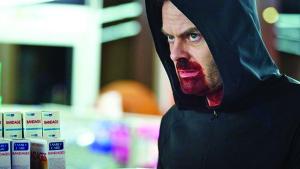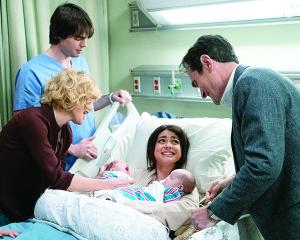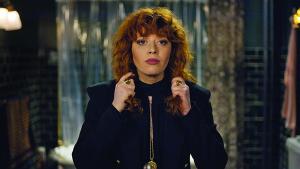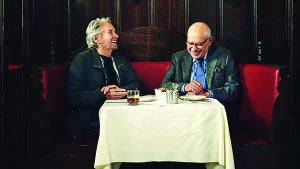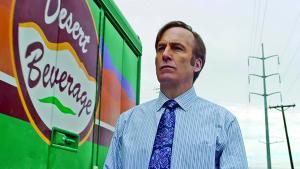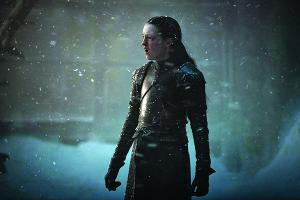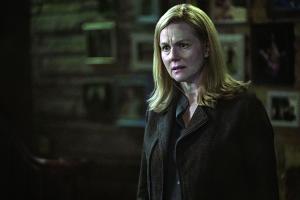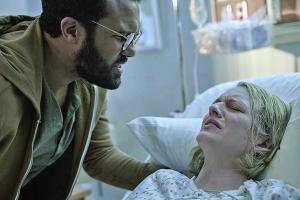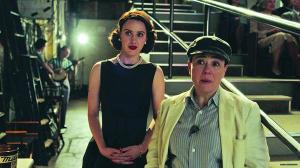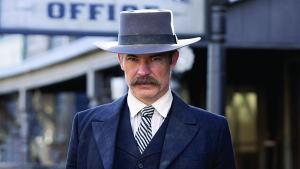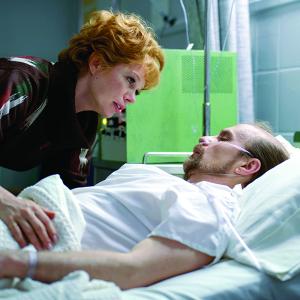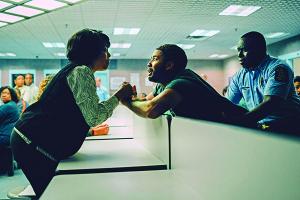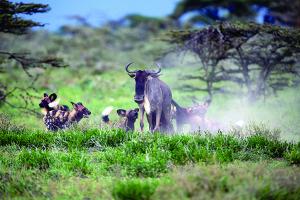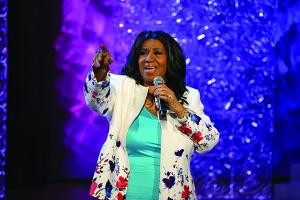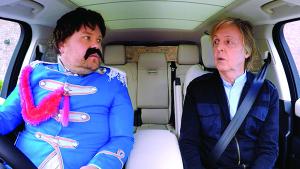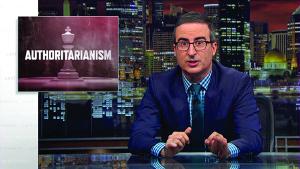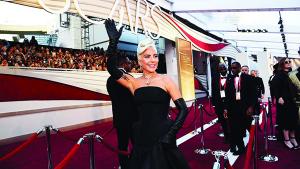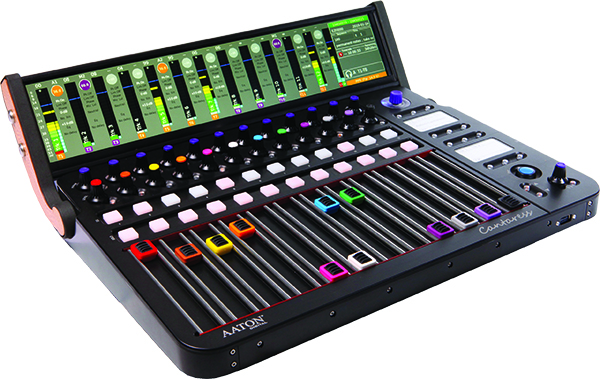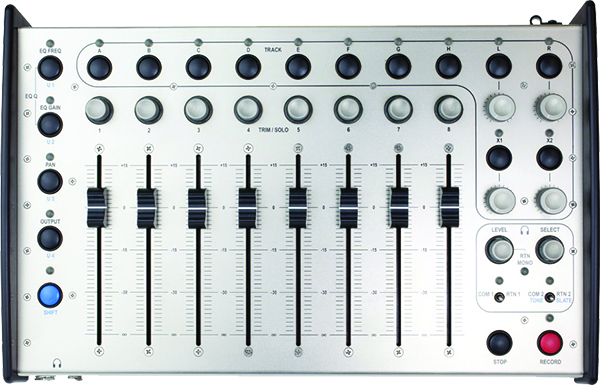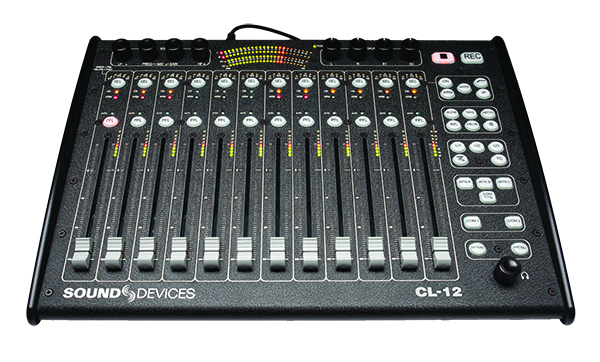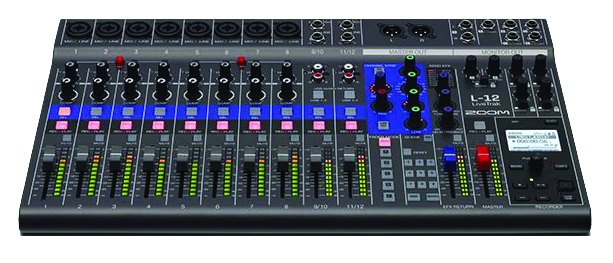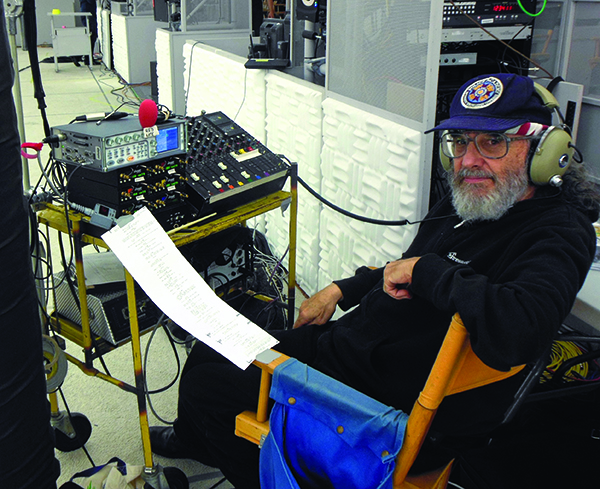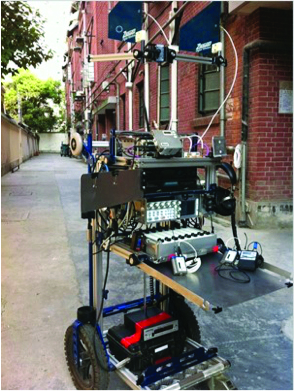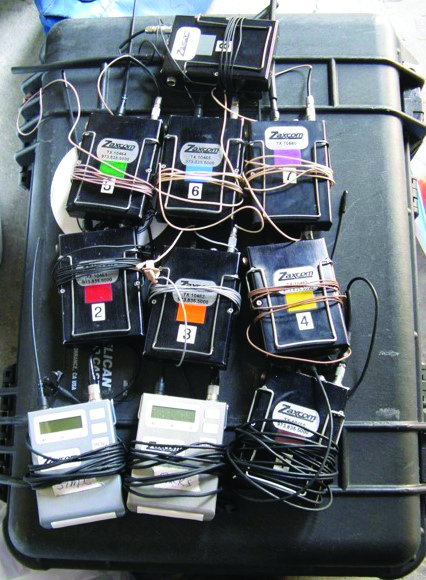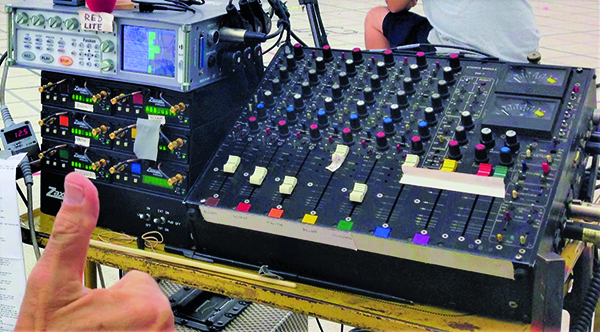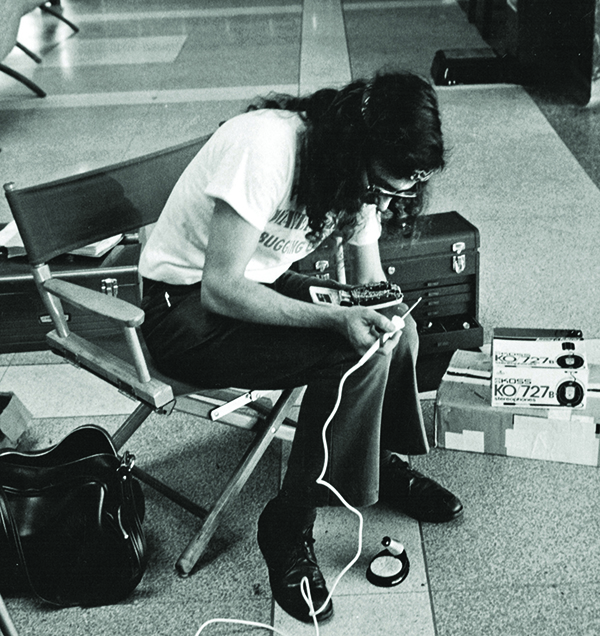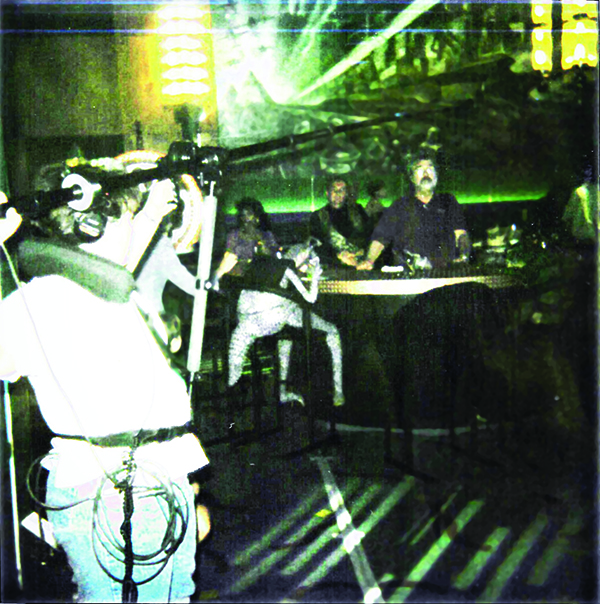Mixing Live Singing Vocals on
CATS Part 2
by Simon Hayes AMPS CAS
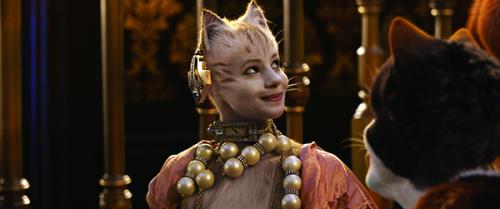
As I mentioned in Part 1, the Sound/Music team required fifty-plus frequencies. During prep, due to the complexity of the shoot, a lot of other departments would need frequency real estate, too. A Google document was set up and each department was asked via email to chart what radio equipment and frequencies they wanted to use so we could make sure nothing would step on or interfere with the cast radio mics and IEM’s. This would obviously have been a disaster.
It was eye-opening watching that document grow during prep as each department added their requirements; whether that was focus controls for the Camera Department, iris controls for the DIT, crane comms for the grips, lighting triggers for the electricians and the myriad pieces of equipment the VFX Department were using. It was a miracle none of us had to compromise; luckily, most pieces of equipment were in the 2ghz and 4ghz bands and away from our wireless frequencies. This process was extremely valuable and something I would recommend becoming commonplace on all movie sets.
Two weeks before we started shooting, Tom Hooper came to me with a new request. As planned, he was going to be shooting on three or four cameras at all times and those cameras would be handheld or on Techno cranes. He wanted to be able to communicate with the camera teams and grips, but also be able to hear the program sound of singing and music in the same set of headphones.
When wearing their IEM’s, the actors were in ‘Cats world,’ meaning they could only hear the other performers on radio mics. This meant that Tom and Ben Howarth, 1st AD/Producer, could only talk to the cast if they removed their IEM’s. We needed to give Tom and Ben the ability to talk to the cast, Camera and Grips on separate channels directly into their IEM’s/radio headphone packs. The cast should not be able to hear Tom giving the Camera Operators and Grips instructions, and the Camera crew and Grips didn’t need to hear Tom’s direction to the cast.

We devised an effective and simple system for Tom Hooper and Ben Howarth to use. Ben Jeffes, my brilliant 2nd Assistant Sound, rigged a stand next to Tom’s monitor with different ‘push to talk’ Sennheiser handheld mics. Each mic had the name of the department it was tuned to communicate with and different-colored tape around the handle so it could be recognized in an instant when Tom went to grab it. Tom Barrow, as part of his IEM mixing duties, handled this process adeptly. He was actually mixing Director and Camera crew comms, as well as the cast IEM’s. It was a full workload and the show depended on him getting it right one hundred percent of the time.
The next part of my prep focused on a discussion with production regarding wireless headphones. In the UK, we use Sennheiser EW G3’s instead of Comtek’s. I explained to production that we would need to give each member of the crew a set which was going to be a very large rental hire. This hadn’t been considered and I had to make the case carefully as to why the entire crew needed headphones. I explained that there would not be any music coming out of speakers at any point during the shoot. We used this protocol on Les Misérables and Tom wanted to use it again on Cats and I wholeheartedly agreed. The issue with using speakers is that they are like a comfort blanket for performers; in rehearsals, they get used to singing with music playing out of speakers and then suddenly feel extremely exposed when they have to sing without the acoustic support while shooting/recording in front of two hundred crewmembers.
I made the point that the cast would feel more comfortable if everyone around them was wearing headphones. This didn’t hold much weight with production once they looked at the large rental quote. I told them that unless the crew could hear the music, all they would hear would be the live singing and that wouldn’t allow most of them to do their job properly.
I gave them several examples: “Why do the grips need to hear the music?” If the DP asks them to start a crane move or dolly at a certain point in the song intro, before the singing has started, how will they know what the DP is talking about? “Why would the clapper loaders need to hear the music?” Because they do the dolly jibs. What happens if they have to jib up at a certain point in a dolly move at a certain musical point? “OK, why would the sparks (electricians) need to hear the music?” Well, they are going to be operating spotlights and programming moving lights that are cued by musical references. At this point, I was starting to get somewhere. Finally, “OK, but stunts, why would they need to hear the music?” They are using wires to fly the cast in some scenes and the moves will be cued by music.
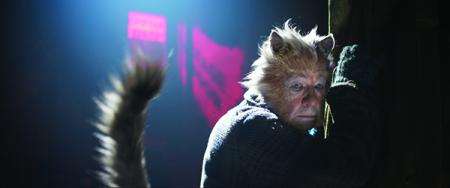
The language of this film IS the music. Each and every person on the crew needs to become completely immersed in it, and the only way to hear the music is through wireless headphones. “OK, how many do we really need? We need a list that only has people absolutely necessary on it.” I replied, “I’ve got the list, here, it’s 130 crewmembers.” That was how we ended up with 130 Sennheiser G3’s with HD25 headphones.
We had an extreme workload and in prep I was always looking for ways of streamlining our tasks. I knew if we took on too many responsibilities as a team, the creative side of our Sound/Music process could potentially be compromised. I constantly try and think about this issue on all the films I mix. I ask myself the question, “Will this help me deliver higher sound quality?” If the answer is no, I either delegate the issue or move it down my priority list.
We had a really incredible discovery as shooting began, which was how perfect the mic position on the forehead was and how fortunate we were that Tom Hooper allowed me to use that placement.
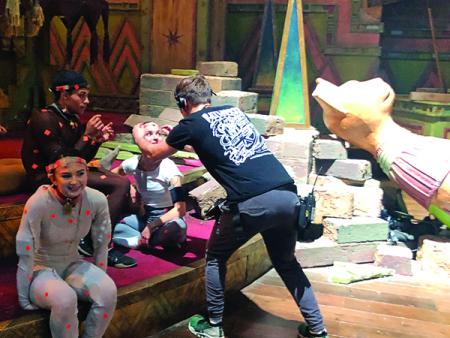
Handing out 130 G3’s and keeping them in batteries daily would have required a crewmember dedicated to that job alone, so it got delegated. I decided to treat them the same way Motorola walkie-talkies are treated on ‘normal’ films. The rule was, if you wanted a set of headphones, they needed to stay with you for the entire length of the shoot. If you lost them, you needed to go and see production and not come to my team or me. We signed out each set and used a label maker to put the crewmembers’ name on both the packs and headphones. We also asked each Head of Department to assign a member of their crew to be the battery change person in their department. We got production to buy rechargeable batteries and a charger for each department. This was one of the best decisions I made to save my crew time. It worked perfectly and another huge time-consuming workload was delegated.
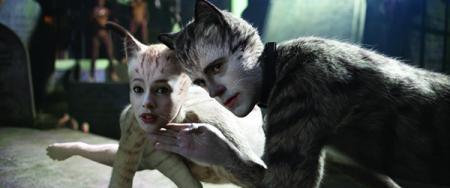
By the time we started shooting, we were one hundred percent ready for the challenge that lay ahead. We had collaborated extensively with each department during our fourteen-week prep period, with twelve of those weeks having our full core Sound/Music team of eighteen!
Simon Hayes, Production Sound Mixer
John Warhurst, Supervising Music and Sound Editor
Marius De Vries, Executive Music Producer
David Wilson, Music Producer
Becky Bentham, Music Supervisor
Arthur Fenn, Key 1st Assistant Sound
Robin Johnson, 1st Assistant Sound & Sound Maintenance Engineer
Tom Barrow, I.E.M. Mixer
Victor Chaga, Pro Tools Music Editor
Mark Aspinall, Music Associate/Keyboard Player
James Taylor, Music Associate/Keyboard Player
Fiona McDougal, Vocal Coach
Ben Jeffes, 2nd Assistant Sound
Taz Fairbanks, 3rd Assistant Sound
Oscar Ginn, 3rd Assistant Sound
Francesca Renda, 3rd Assistant Sound
Ashley Sinani, 3rd Assistant Sound
Kirsty Wright, 3rd Assistant Sound
With a team of this size all working together, we were able to have a huge creative impact on the filmmaking process. I felt fully supported by each and every person on our team. They gave me the freedom to allow me to focus on the creativity necessitated to give justice to the live performances by our cast. There was a very palpable feeling on the set between cast and every crew member that we were all creating the world of Cats, together, and very strong bonds were forged.
Our responsibility was that every department on the film relied on the Sound/Music Department to do their job effectively. It was not just recording the vocals live, but also providing the comms for the whole cast to be able to communicate with each other as they performed. The sets were so large and expansive; often we would have cast members singing solos many tens of meters apart from each other. They needed to be able to hear the other performers for their own cue points, even if they couldn’t see each other. The entire show was such a huge collaboration between actors and filmmakers. We were all working together to make something extraordinary for the cinema audience. Each of us felt a huge sense of responsibility to Tom Hooper and Sir Andrew Lloyd Webber, and wanted to prove that we could create something sensational as a team.
I built a great relationship with the entire cast as I worked with them throughout the shoot to provide them exactly what they needed to sing and dance perfectly take after take. I got to understand their characters and how they would emote, which was paramount for me mixing twenty-four mics, live on every take.
I needed to be precise with my gain structures, requiring an enormous amount of concentration. I was working without compressor/limiters in the chain and any EQ, apart from a 70hz Low Frequency roll-off, to protect the mic from wind during the dance movements. This is how I like to work when recording live singing. It was my aim to provide Sound Post the purest, most perfectly recorded tracks possible. I had to keep my headphones on at all times unless I had to leave my cart to speak to the actors, Tom Hooper or Chris Ross, our wonderful DP. I needed to be constantly aware if any mics had ridden up the forehead by an inch and let Arthur know so he could reset the headband. I had to listen for hits on frequencies or anything out of the ordinary between takes as it would be impossible to troubleshoot once we were filming. If I missed an issue before a take, I would be jeopardizing that actor’s vocals while shooting.
We had a really incredible discovery as shooting began, which was how perfect the mic position on the forehead was and how fortunate we were that Tom Hooper allowed me to use that placement. On the second day, one of our cast had to do a forward roll as part of his choreography while he sang. There was no break in the vocal as he rolled. I was expecting some kind of impact or mic rustle on the first take and potentially the need to do a Wild Track, but the vocal was perfect. There was no change in perspective at all. I put that first take down to luck and expected to hear an impact on take two but the vocal was perfect. The mic never got hit and it was like that again and again.
It doesn’t matter whether someone was spinning on their head during a break dance routine or tumbling like a gymnast, their forehead never touched the ground. We found throughout the shoot that whatever the performers’ choreography required, their mics would never get impacted in that position. It was a fortuitous piece of luck that meant we could record high-quality vocals even when the choreography was frenetic and explosive.
We did have to use a different mic placement strategy for both Laurie Davidson, who plays Mr. Mistoffelees, and Idris Elba who plays Macavity. They wore DPA cheek mics most of the time. This was because they were wearing hats, which we found in rehearsals would touch the forehead mics, causing rustle on their tracks. The cheek mic position was a little more intricate for VFX to remove in post, and required Tom Hooper and our VFX Department to sign off on. I then sent tests of the actors singing to Nina Hartstone, our Dialog Editor, to see if she could EQ the cheek mics to match the forehead mics. Nina confirmed this was the case. We bounced a lot of tracks to her while we were shooting to get her opinion about specific issues or concerns. Nina is an absolutely first-class creative Dialog Editor and a straight talker, so I knew if she was happy, we were doing well.
The feeling I had every day when wrap was called and I could take my headphones off was extraordinary. Never in my career have I had to concentrate so hard for such extended periods of time. I had been in a different world trying to record perfect vocals under enormous pressure of the live moment. I would like to pay tribute to the cast and their unbelievable vocal and physical stamina. Each and every one of our performers put in a super-human and extraordinary effort. They were on camera for twelve hours per day with only one hour of rest at lunch. Witnessing their cheeriness and good humor really humbled the whole crew. They were putting in the same kind of physicality you would expect from Olympic athletes, while performing in character with all of the emotion that entails, and singing live. The amount of breath control they were able to exhibit was unbelievable. All of them loved the live process unconditionally and gave us wonderful, collaborative support in the process.
I must mention two performers who were literally singing solo and dancing in almost every scene, Francesca Hayward, who plays Victoria, and Robbie Fairchild, who plays Munkustrap. Their effort was herculean and I was amazed at how perfectly they could perform day after day, hour after hour with so little downtime.
As I write this article, I am in daily contact with John Warhurst and Nina Hartstone, who are approaching the final mix. I can’t wait to hear the finished project I put my heart and soul into. I feel I grow a little with every film I make as a Production Sound Mixer, but Cats, thanks to Tom Hooper and Working Title, gave me the opportunity to grow a lot. I learned so much about what is achievable when a Sound Department is supported so mightily, and what a tremendous creative impact our craft has when collaborating with cast, crew, and director to produce a live musical.
Victor Chaga, Pro Tools Music Editor
Usually with on-screen musicals, the music and the vocals are recorded in advance. It is common to have the actors mime on set to the playback of the pre-recorded material. My conversation with Simon about the project demonstrated that Cats was going to be anything but conventional.
As you by now know, all of the vocals for this film were to be recorded live on set. An extensive amount of thought and planning has been put in by us in the Music and Sound departments to have the ability to support the actors musically, all the while making absolutely sure they are not time constrained by the music. As conversations continued, we developed a system that allowed us to seamlessly switch between live musicians, pre-recorded multitrack stems, and material recorded live, on set, during previous takes. This allowed us to instantly adapt to the performance in front of the camera and facilitate requests from actors and production.
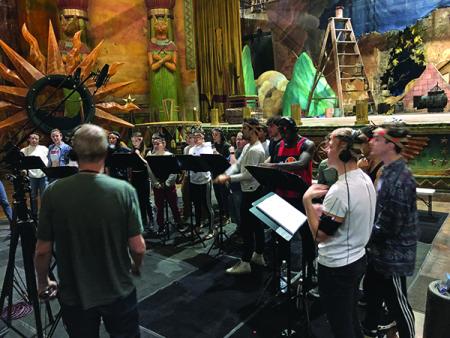
“It is common to have the actors mime on set to the playback of the pre-recorded material. My conversation with Simon about the project demonstrated that Cats was going to be anything but conventional.”
–VICTOR CHAGA
My side of the setup consisted of three distinct elements: live piano, a Pro Tools playback system, and a separate record system that was parallel to Simon’s. We really wanted the actors to lead the musical performance and not the other way around. Having live musicians behind the camera, alongside the playback setup, allowed us to provide our cast with the musical support they needed. By using an auxiliary record rig, we could quickly take Simon’s mix of the previous/best take, import it into the playback session and rebuild the pre-recorded material around the favored performance to be ready for playback by the time cameras rolled again.
For any given song, we would come up with a strategy between the Music, Sound, and Choreography departments to accommodate our director and cast. On a scale from completely rigid to completely free, we came up with the following options:
1. Playback of pre-recorded material
2. Playback of pre-recorded material with live piano playing on top
3. Live piano playing along to a click track (metronome) based on a tempo map of the pre-recorded material
4. Live piano playing freely with the ability to trigger “reference clicks” (four or eight clicks at a decided tempo). This allowed the musicians to follow the actors freely, yet still have a reference for the desired tempo of the music. For example: the pianist could trigger a reference click at the start of a musical phrase to guide the cast to the given tempo, yet quickly let the actors take over and allow them to feel the rest of the phrase, speeding it up or down as they saw fit. It should be noted that most of the time the click track was only heard by the musicians and not the cast.
5. And finally, the musicians could play completely free, with no interference from myself, following the actors and allowing them complete creative freedom.
At any given point in the track, we could employ and seamlessly switch between any of the above approaches: the intro of the song would be played live, going into playback for the chorus, then back to live piano with reference clicks, and back to stems again … or vice versa!
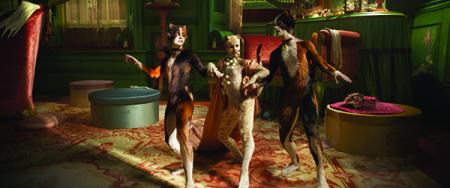
The more we planned ahead, the more it became apparent that three things were at utmost importance: simplicity, flexibility, and reliability. I needed a rig simple enough to navigate and troubleshoot quickly. It needed to be highly flexible in terms of I/O, mixing, and routing options. We needed a certain level of redundancy, in case anything did, indeed, go wrong. With a film like Cats, that is completely reliant on music, the last thing you want to do is find yourself in a situation where you’re not able to play any … especially if your job description is “Music Playback” … and ESPECIALLY if you’re sitting next to Simon Hayes!
Having a background in designing and building customized writing systems for various Hollywood composers, I’ve had the privilege to test out various interfaces and computer systems in different capacities. I’ve found RME interfaces to be very flexible and reliable in the past, and for this very reason decided to go with the Fireface UFX+ for the box’s versatility and its ability to handle most audio and I/O formats. (Sorry, Tom Barrow! We’ll do Dante on the next one, I promise!)
The UFX+ was one of the integral pieces of the puzzle. Having the standalone features of the interface outside of the DAW, meant I could rely on the Fireface as a safety net. If the DAW or the computer crashed mid take, the UFX+ would still pass the live piano signal to our IEM mixer, Tom Barrow. In certain situations, that could be the difference between saving and ruining a take.
The routing and mixing flexibility of the interface meant I could keep the Pro Tools sessions clean and simple, with the bare minimum set of controls and I/O options, preventing anything from being nudged, reset, or misrouted, and being able to quickly tell if something is amiss. No ambiguity. Using the TotalMix FX software, I could then take these feeds from the keyboard booth and Pro Tools, and distribute them at set levels to Simon, Tom, and my second record rig.
I found the ability to lock the user interface extremely useful. If there were any changes that needed to be made with regards to routing or levels, I had to go through an extra step to make them, and once the user interface was locked, nothing could be nudged or changed accidentally. Having the ability to save and recall snapshots/workspaces meant I could trace our workflow all the way back to day one, if needed. Again, no ambiguity.
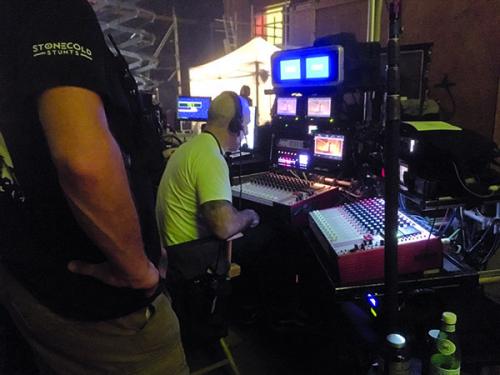
The Pro Tools sessions consisted of the following:
1. Playback LTC (used for synchronization of Simon’s recordings and pre-recorded material in Editorial)
2. Click (Metronome) track based on the tempo maps of the pre-recorded material
3 Tracks for imported material (Click, Simon’s Vocal Mix, Live Piano, Playback Mx (Music)
4. A and B rolls for the pre-recorded stems. Having two allowed me to have the flexibility to edit and build transitions between incoming and outgoing songs
On the record side, I had a small laptop rig receiving ADAT streams from the mothership that is the UFX+:
1. Simon’s Vocal Feed
2. Live Piano Feed
3. Playback LTC
4. Playback Click
5. Playback Mx (Music)
6. Live Piano Midi
Each playlist matched the scene and take number of the film, so we could quickly find the recordings of the performances Tom Hooper preferred. Having the two computers networked meant that I could export these playlists directly to the playback machine and save valuable time that would have been spent on copying data to and from transfer drives. This allowed me to quickly import and synchronize the material recorded on set to the playback sessions, or edit said playback sessions to the material recorded on set, all without nagging Simon for the files.
Having this flexibility required a lot of coordination between the Music and Sound departments. “What are we doing next, John?” “Are we listening to live or pre-recorded piano?” “Do we need to feed the lead vocal recorded on the previous take to the rest of the cast on this turnaround so they could find their tone and their pace?” “WHICH VERSION, Marius?!?” “Do we need to add or remove four extra bars to accommodate the new camera move?” “Simon, sir! Would you like to take down both the old pre-recorded backing vocals, and the new live vocals (previously recorded on set) on your ISO’s, or would you just like the ones we’re recording on the next take?” “Tom, could we send the click track to all the cast, please?”
You could see how things could go very wrong very quickly.
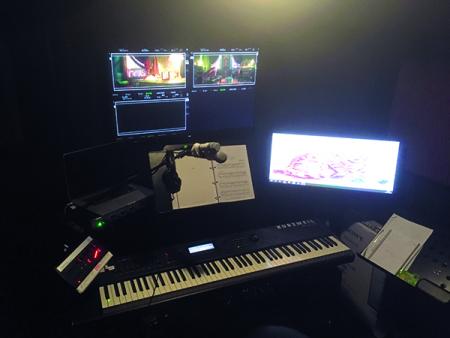
“Cats was a very rewarding challenge. I was very impressed with Simon’s output to Editorial and what this level of collaboration, forward planning, and organization can achieve. I ended up mixing up to forty channels into sixteen mix busses, over two separate mixers on the fly, for most of the time.”
–TOM BARROW
We also found that we needed a lot of coordination between the musicians and myself. Having the actors on set and musicians in the keyboard booth meant we were relying on Simon’s mixes, Tom Barrow’s comms and video screens for feedback from each other and the cast. Try putting the musicians from the most rehearsed and cohesive band into separate rooms and ask them to play together. You could imagine that it would be a very challenging task at best and could easily descend into pure chaos at worst. Our pianists and I had barely three weeks to rehearse.
We quickly realized that the transitions between playback material and live piano could be a lot smoother if the musicians had control of the playback material in certain situations. Indeed, after much deliberation and research, we settled on custom-programmed pedals that would control the transport of my Pro Tools sessions from the piano in the keyboard booth. We would agree on what bar they would want to start the playback material on, I would line up the playhead and they would trigger the playback. Sometimes that would happen multiple times during the same take. This was also our go-to procedure for the reference clicks I mentioned earlier. Having worked out this system meant our musicians could check tempos only when and if they needed to, without any unwanted meddling in their performance from the likes of myself.
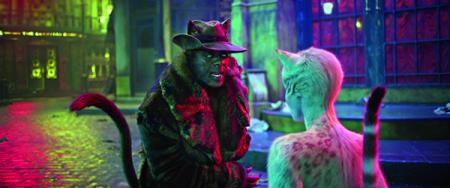
It was a daunting task when we first started, but it quickly became apparent that Simon, John, and Becky are as incredible at picking the right people for the team as they are at what they do. By the end of the first week of the shoot, our teams had become as tightly woven as the fabric of MADI, Coax, MIDI, and XLR cables that littered the floor of the set. We worked out all the kinks. It was time to hang on for the ride.
This having been my first on-set job, I’m incredibly thankful to Becky for putting me up for it, and Simon for taking me under his wing. However, I’m convinced that none of this would have happened if it wasn’t for our trainee, Jake Elliott, whose vigor, determination, and selfless commitment have kept us fed, warm, full of coffee, nonviolent, and focused on the momentous task that was Tom Hooper’s Cats! Plenty of tea bags for us! Shout out to Jake Elliot!
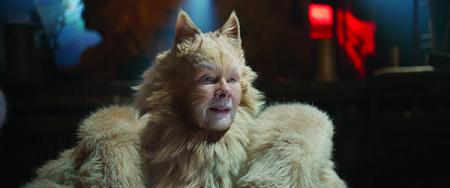
Tom Barrow, I.E.M. Mixer
When Simon Hayes asked me to be part of the Sound/Music team on Tom Hooper’s Cats, I knew it was going to be uniquely challenging. I also knew from previous experience that Simon’s fastidious and collaborative approach to negotiating would also allow me to concentrate my efforts on the job at hand, so I jumped at it.
We had a large number of radio mics, live musicians, multiple channels of Pro Tools playback, twelve mono IEM feeds, plus a director to artist talkback. Not just that, but it had to be portable and relatively quick to rig. That was for starters. It was going to grow, and it did.
Before thinking about specific pieces of equipment, my first thought was about the general infrastructure of my system, and the first thing that sprang to mind was Dante. An unfussy setup with incredibly fast and intuitive routing. Sixty-four bidirectional channels on one CAT6 cable all run though unmanaged gigabit switches. Perfect. I’ve been a great advocate of Dante and have been using Focusrite RedNet equipment for several years now, so I was comfortable with Dante’s reliability and confident that it wouldn’t fail at a critical time. Although I knew I’d have to invest in some chunkier CAT6. Amazon would not do!
Luckily, I already had a small footprint mixer with a Dante option. The Midas M32R and thirty-two input stage box. I also had the Focusrite RedNet PCIeR card for interfacing with my computer, so I felt at the time, I had routing and mixing pretty much covered.
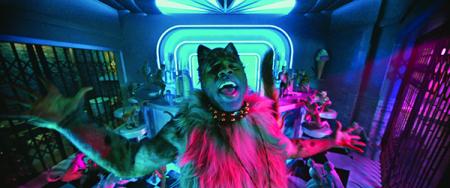
The next step was to select a good IEM system. In the end, we settled for the Lectrosonics Duet M2T and M2R system. It’s brilliant and as luck would have it, it’s Dante-ready and works in a frequency band we weren’t already using. Between Arthur Fenn, Simon’s Key 1st Assistant Sound, and Roger Patel of Everything Audio, we tried to find the slimmest body-worn receiver we could, due to the very acrobatic cast already having to wear a lot of other gadgetry. Not the cheapest by a long way, but the audio quality was superb and the flexibility and features in both the transmitters and receivers were excellent. The only problem was that they were brand-new products and there were simply not enough receivers in the UK. However, we have a great relationship with both Roger at Everything Audio and Lectrosonics. They understood what we were doing and got us the equipment we needed. Now with the added use of a TX antenna combiner, a large directional antenna, and a small cart, I could run the transmission system to anywhere on the stage and cover all of Eve’s enormous sets.
Next up was a conversation with our Pro Tools operator, Victor Chaga. I was keen to continue the Dante theme throughout as much as possible, but that was wishful thinking! Victor’s RME interface employed MADI. For a day or two, I thought this was going to be a problem but it actually led me to using the most useful piece of equipment and one which ended up being the key centerpiece of the whole routing system; the Ferrofish A32 Dante. This solved two problems. The first, how do I convert Dante to MADI and back again? There were other units on the market but they were basic and this unit allowed me to do a lot more.
The Ferrofish A32 Dante not only has sixty-four times Dante and MADI, but also thirty-two times ADAT, and thirty-two analog input and outputs, all-in-one 1RU-12v powered unit. What occurred to me was that if I took all of Simon’s radio mic analog direct outputs and put them through the A32, along with any other flavor of audio from Pro Tools and various other sources, I’d have a much better routing matrix than if I ran everything into the Midas directly. So anything musical that went into the cast’s ears, went through that unit first. I could put the audio anywhere I wanted to and in as many duplicate places as possible with just a click on a track pad.
My next consideration was adding the live-music element to the Pro Tools element. I like this part of the system and general concept. Coming from a musical recording studio background, in my opinion there’s an “atmosphere” you record when you have musicians and vocalists bouncing off each other in a live environment. Pro Tools (obviously) cannot feel moods and react to emotion. For those moments, the live musical element was crucial and Pro Tools was great for giving us rigidity in tempo when that was required. When we needed both, I could send a click track from Victor to the musicians.
With all of this, I was running out of channels on the Midas. Although we were the Sound/Music team, the music part of the team still needed to work independently of the Sound Department and they all wanted to hear different things and each other and have private talkback to the cast. They needed their own mixer. One that I could control remotely and have their own mix system that wouldn’t affect anything but their own mix. We ended up using the Behringer X Air 18. A consumer mixer but a Wi-Fi-controlled one. They could have all musical instruments, a feed from Pro Tools, a mix of the cast and their talkback completely independent of everything else and it had enough outputs to feed multiple channels to me. I also added a Behringer P16M, which is the personal mixer system so the keyboard player could create his own mix and save it for each musical number. We ended up duplicating the musical part of my system over three main stages once we had a basic mix set up, so we could just turn up, plug in, test and away.
I had the overall shape of my rig and now it was to the rehearsals. Simon had negotiated extensive rehearsal time with the cast. This was necessary for several reasons, but one important factor was that ear monitors take a bit (a lot) of getting used to for artists. Even in live-music events where these are used regularly, if a musician has never used IEM’s before, they can feel isolating, alien, and distracting. They had to get used to the IEM’s and feel comfortable with them before shoot day one. Most of our cast was even further removed from that world, having come from musical theatre and dance. To make them comfortable and give them an understanding as to what was possible and what wasn’t was very crucial. We needed time to iron out any kinks in our ever-expanding audio system, and create a basic useable mix for the cast and Music Department to monitor.
Onto the shoot. For me, this was an ever-changing and very organic process. In some areas it would change daily, but in others, it had to remain rigid throughout the entire process. My mix of music to Simon had to remain at exactly the correct level so it wouldn’t leap around wildly in amplitude when cut together. I also was unusually tasked with creating a mix for Tom Hooper to monitor whilst we were shooting. Ordinarily, this would be an output from Simon’s mixer, however on Cats, Simon’s mix, although perfect for editorial, was not necessarily what Tom needed to hear. Simon wanted me to EQ, compress, gate, and generally polish and tighten up a live mix for Tom’s headphones which obviously wouldn’t affect Simon’s recording for Editorial and Sound Post, and give something to Tom during the shoot that sounded a little more like the final mix.
Personally speaking, Cats was a very rewarding challenge. I was very impressed with Simon’s output to Editorial and what this level of collaboration, forward planning, and organization can achieve. I ended up mixing up to forty channels into sixteen mix busses, over two separate mixers on the fly, for most of the time. I’ve always enjoyed pushing myself technically and problem solving, and there was certainly plenty of that for me on ‘Cats’. If I’ve learned anything, it’s that however big your mixer is, it could always do with being bigger!
John Warhurst, Supervising Music and Sound Editor
I worked on Les Misérables alongside Simon and Becky, so was very pleased to be invited to meet Tom Hooper and Film Editor Melanie Oliver at Working Title in the summer of 2018, with a view to working on Cats. The film had been green lit and was going to shoot later in the year. I remember wondering before the meeting how it was going to be shot, as it’s a musical that has a lot of choreography. I couldn’t imagine Tom making a musical film that didn’t involve live singing, but I also wondered how it would be done with so many large set pieces, involving many cast singing and dancing simultaneously.
I came out of the meeting with the definite feeling that the final soundtrack of this film would be all about the sound recorded on set. I knew it would be important to go through the schedule with Simon and try and find moments when wild tracks could be recorded. Or any sung parts that might need to be recorded separately to make sure we would be covered in post production. After discussing the track layout with Simon and how many mics he would be recording, I knew it would be an editorial challenge with forty tracks per take. We need to be organized and test workflows right from the start of the shoot to be absolutely certain there weren’t any technical hurdles in post production.
There has been a lot written about Les Misérables, and how it empowered the actors to lead the performance and the music would follow. Each performance could be changed or adapted from take to take with a live pianist following every turn or pause the actor wanted to make. Cats was going to be all of that and more. There were some songs, and some sections of songs that would need to be music playback so the tempo could be rigid for the choreography involving up to forty-two dancers and twenty-four singers. It became further complicated because there were multiple instances within a song where the music would need to be live, and then playback, live, and then playback again.
We were very fortunate in finding Victor Chaga, our Music Playback Operator whose technical abilities are first class. He fitted straight into the team, which is so important on a stressful film set, especially this film set, where nothing would operate without music. It was important that everyone on our team had the right temperament to be able to deal with what can often seem like unreasonable requests within the timeframe expected.
When we started rehearsing, the tricky part was going from live to playback seamlessly. There were two main pianists, James Taylor and Mark Aspinall. Something we learned from Les Misérables was the importance of whoever rehearsed with the actor then transferred to the set. The actor would develop the part with their pianist and then know that same person is on set accompanying them in exactly the same way as it had been rehearsed. Rehearsals were also taking place at the same time as shooting, so there was always a need for at least two pianists.
James and Mark were playing in an acoustically treated booth, without windows, so communication was always going to be an issue. Our first thought was would it be better for Victor to go in the booth with the pianist, like a small theatre pit band so they could have good communication with each other. But there were many more reasons why Victor should stay next to Simon, reasons that might be the difference between the smooth running of the set or not. The first attempts going from live to playback, and back to live again felt glitchy, too random in execution and not musical because of the disconnect. We were concerned; this had to feel musically perfect and seamless one hundred percent of the time. This led to many discussions about how these two things could interface better.
Memories came back of playing in a band as a teenager and our drummer used to have a foot switch to trigger a MIDI sequencer. There’s something about the person playing to match the sequencer if they are the ones that trigger it. We discussed this idea with James and Mark about using a non-latching foot switch, which would start and stop the Pro Tools music playback. They agreed to give it a go and we bought a foot switch with USB extender cables. After the first rehearsal, it became clear this was the way forward, it was instantly more seamless. Victor was able to keep playing back from the right bar number, making sure it had stopped when it should and re-cueing for the next playback. We now had a system we felt could be taken onto the Cats film set. This was improved further by having a second monitor in the keyboard booth that had the Pro Tools bar count window visible to the pianist, so they could have the confidence knowing that if music playback starts at ‘bar 53,’ they could see Pro Tools was cued up and ready to go, whilst playing up to it.
Once we got up and running with the excellent communication system that was so crucial to the smooth operation of the department that Tom Barrow put together, we all felt ready to go on set!
My role was to foresee any issues that might come back at us in post and to stay close to our Director, Choreographer, and 1st AD making sure we always knew where we were going from in the music. Were we going to play back someone’s vocal who wasn’t on set that day? Do we need a vocal or dialect coach? I was employed to work on the film through post production, until final delivery.
I knew I needed to work with my Co-supervising Sound Editor, Nina Hartstone. Her experience and work with dialog is second to none. Although Cats is a musical film and everyone is singing, the way we deal with the audio in a live-sung musical is identical to a dialog film. It’s like dialog editing in soprano, alto, tenor and bass!
Nina Hartstone, Dialog Editor
When John Warhurst first spoke to me about working on Cats, I knew it would be great to work on a musical film with him again, employing some of the same techniques we brought to Bohemian Rhapsody in order to achieve the best possible finished soundtrack. One of the first steps of working on the vocals and dialog of Cats was to assemble the sound to the current picture edit and listen through Simon’s on-set recordings. For the Avid, Simon supplied two mix tracks (12 + 12), and a track of the music, playback, and live.
For sound editorial, we had the fantastic resource of all the ISO tracks. The use of multiple forehead-mounted lav mics, across two sound recorders, locked to the same timecode, provided a wealth of material for Sound Editorial. It allowed for a great deal of flexibility in the decisions of which tracks to favor for any one shot. It was a complex task de-multiplexing the source audio and conforming to the picture edit, but well worth it to have separate recordings, which maintain proximity throughout all the dance moves for every character. It was no small feat for Simon and his team to capture such good recordings for the multiple mics and avoid any kind of distortion, even across extremely dynamic performances. All their work is being used in the final vocal/dialog edit. Many hours have been spent listening through every mic recording across all takes, to compile libraries of breaths and movement from the dancers, clean of main vocal, allowing us to keep the ensemble presence alive during every scene.
In addition to the forehead placement, mics were mounted on the shoes of the lead tap dancer for one of the songs, capturing close and detailed sound for every tap, scrape, and scuff, which really complements the close camerawork, and has been a fantastic resource throughout the scene. In Editorial, we have created a tap library from the original recordings, utilizing all tap moves clean of singing and enabling us to build a continuous tap-dancing track, perfectly timed to the music, throughout the scene.
With all the vocals, John and I worked very closely safeguarding authenticity and musicality in the performances, ensuring both sync to the lips and the music is always very precise, constantly asking Picture Editorial to roll shot sync for us to achieve this. This movie has amazing dancers and singers performing live and our aim is to create a soundtrack that sounds hyper-real and intense, using all the great recordings from set.
In areas of ensemble singing in Cats, it has been a time-consuming but rewarding task to meticulously edit the tracks for each character to make certain no undesirable noises are magnified across the bank of tracks and ensure they all play together without any phasing issues. For these chorus sections, we also had the benefit of additional Wild Track recordings that Simon and John acquired on set, allowing us to have both great-sounding singing, as well as the authenticity of the sync recordings, which gives us vocals with the movement of the dance.
There will be very little ADR required for this film, but for storytelling reasons, lines need to be added in post production in addition to what was shot. We plan to employ the same techniques to record our ADR as those used on set. The same mics will be mounted on the forehead. Where it would be beneficial for the actor to move around to replicate their performance, they will be wireless and free to mimic their on-set dancing or movements. The most important element of recording lines or vocals in post is to allow as much freedom as possible for the artist to recreate their original performance effectively.
There is still plenty of work to be done, as we are working toward our final mix. All the work by the Sound and Music team has been outstanding, employing innovative techniques and pushing the boundaries of what can be achieved in a musical film to support Tom Hooper achieve his incredible directorial vision. It will be exceptionally rewarding to see and hear it all come together in these final stages!
